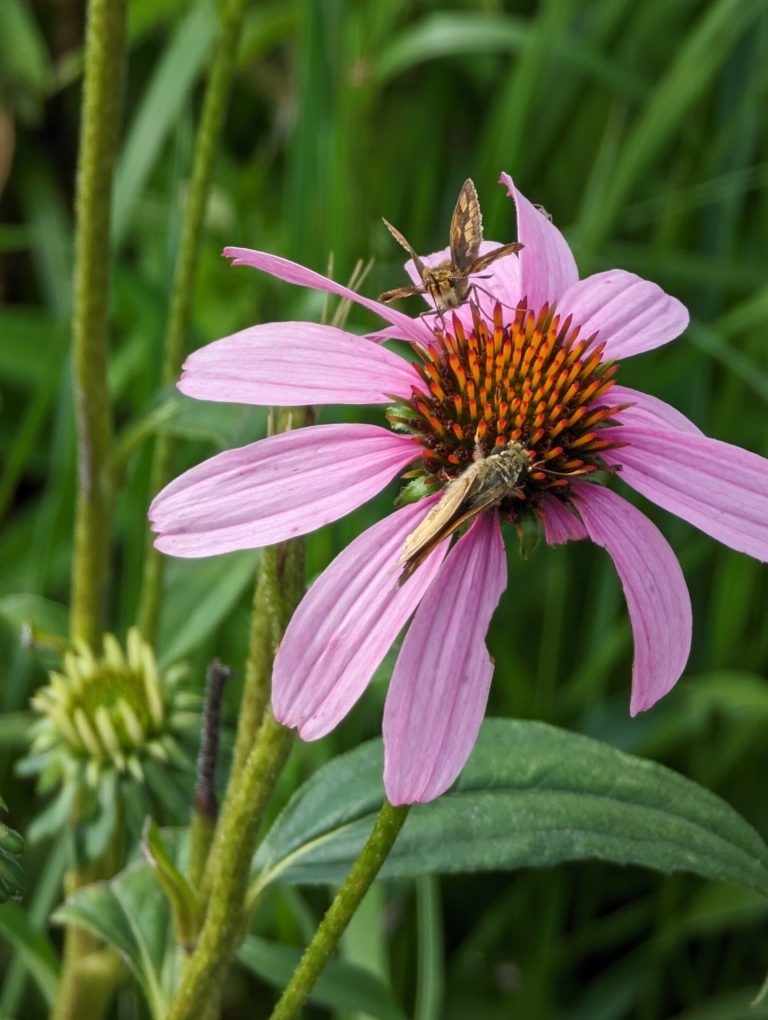
There are great benefits for putting in native plants in the fall. The temperatures are cooling, rain comes regularly (despite last week’s heat wave) and since we generally don’t get a hard frost until around Thanksgiving if not later, plants have time to settle in, start some root growth and prepare for the winter season.
You’ve had time to observe your yard and should know what areas get sun, where plants are already thriving and where they are not.There are plants adapted for almost every situation, because Mother Nature abhors a vacuum. There are times when you have to take big steps to remedy a difficult area, like the dense rooty shade under the non-native and invasive Norway maples.
Early in our home ownership, we executed the three Norways in the backyard, because when we looked at the house which had been vacant for nearly a year, the shade was so dense that there wasn’t anything growing in the backyard other than those trees. Think of them as giant weeds. We replaced them with Juneberry (Amelanchier) Dogwood (Cornus Florida) American Beautyberry, Trumpet Vine and others, creating a diverse habitat.
There is a long list of plants that should be removed, and replaced with a native. Burning Bush, Euonymus alatus, was like many introduced plants brought in for its drought resistance as well as bright red fall foliage. Highway departments have a lot to answer for, as in their quest for tough plants that would thrive without any care at all, they have introduced a number of now invasive plants — Crown Vetch, Canary Reed Grass, and Autumn and Russian Olive among others.
I’m not advocating for ripping out every non-native in your yard. I love scented roses and lilies and have them in my garden. The key is invasive — a plant or animal that has no natural predators and spreads quickly, outcompeting the native species. If you go into some of our local parks and preserves, you can see layers in the war of the invasives — Rosa Multiflora and Asian Bush Honeysuckle, engulfed by English Ivy, Porcelain Berry, and Mile-a-minute vines. Some are foolers, the Purple Loosestrife that doesn’t spread in your yard, sends its tiny wind-carried seeds in any nearby wetland where it forms dense thickets. If you have any of these, pick at least one for replacement this fall.
What are good replacements? For medium to large size shrubs, there are many Ilex (Holly) like Winter Berry, Ink Berry and American Holly. Hollies need a pollinator as do most native Viburnums to produce fruit. If you have sandy dry soil, the native Bayberry or Beach Plum. Shrub dogwoods like Red or Yellow Twig can tolerate wetter conditions. There is a wide range of perennials to choose from offering flowers for pollinators and seed for birds. Purple Coneflower is one of the most well-known, but there are lovely options in all colors and for varied soil conditions. Garden Phlox, Coreopsis, Black-eyed Susan, Cranesbill Geranium, Asters, Goldenrods and the all important Milkweeds will create a long season of color and host beneficial insects.
There are lots of excellent online resources. Just make sure to search for Northeast natives because native is like real estate – location, location, location. Native to the Southwest is not native here, and our local birds and insects haven’t adapted to use it as a resource. There are several local not-for-profit organizations that hold annual native plant sales as well as nurseries.
Even drought-tolerant species will still need to be watered for their first two years while they establish a strong root system, but they won’t do that with 20 minutes of water a day — a better strategy is to water deeply for an hour or more every seven to 10 days when there hasn’t been rain. Those deep roots will carry a plant through times of drought. Enjoy the fall and update your garden with some natives to help return diversity to our suburban ecosystem.







